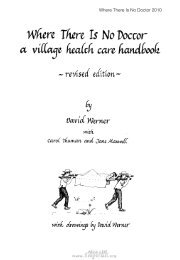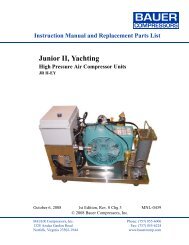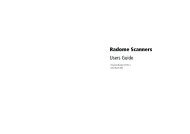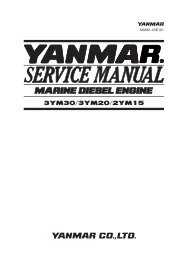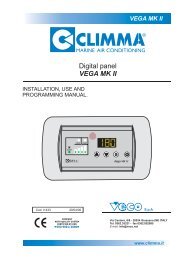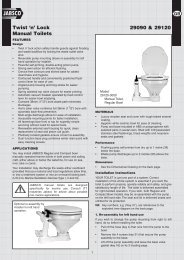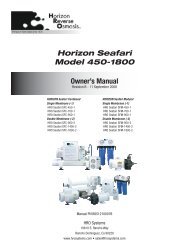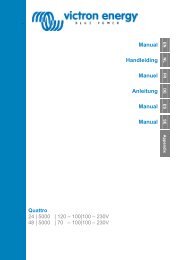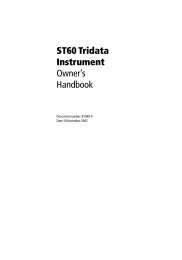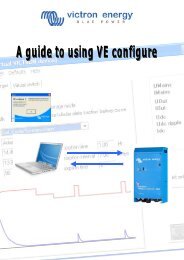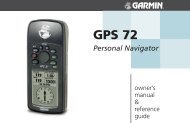AIS 650 Installation manual - Zanshin
AIS 650 Installation manual - Zanshin
AIS 650 Installation manual - Zanshin
Create successful ePaper yourself
Turn your PDF publications into a flip-book with our unique Google optimized e-Paper software.
System protocols<br />
Your product can be connected to various products and systems to<br />
share information and so improve the functionality of the overall<br />
system. These connections may be made using a number of<br />
different protocols. Fast and accurate data collection and transfer is<br />
achieved by using a combination of the following data protocols:<br />
• SeaTalk ng<br />
• NMEA2000<br />
• NMEA0183<br />
Note: You may find that your system does not use all of the<br />
connection types or instrumentation described in this section.<br />
Seatalk ng<br />
SeaTalk ng (Next Generation) is an enhanced protocol for connection<br />
of compatible marine instruments and equipment. It replaces the<br />
older SeaTalk and SeaTalk 2 protocols.<br />
SeaTalk ng utilizes a single backbone to which compatible<br />
instruments connect using a spur. Data and power are carried within<br />
the backbone. Devices that have a low draw can be powered from<br />
the network, although high current equipment will need to have a<br />
separate power connection.<br />
SeaTalk ng is a proprietary extension to NMEA 2000 and the proven<br />
CAN bus technology. Compatible NMEA 2000 and SeaTalk /<br />
SeaTalk 2 devices can also be connected using the appropriate<br />
interfaces or adaptor cables as required.<br />
NMEA 2000<br />
NMEA 2000 offers significant improvements over NMEA 0183, most<br />
notably in speed and connectivity. Up to 50 units can simultaneously<br />
transmit and receive on a single physical bus at any one time,<br />
with each node being physically addressable. The standard<br />
was specifically intended to allow for a whole network of marine<br />
electronics from any manufacturer to communicate on a common<br />
bus via standardized message types and formats.<br />
NMEA 0183<br />
The NMEA 0183 Data Interface Standard was developed by<br />
the National Marine Electronics Association of America. It is an<br />
international standard to enable equipment from many different<br />
manufacturers to be connected together and share information.<br />
The NMEA 0183 standard carries similar information to SeaTalk.<br />
However it has the important difference that one cable will only<br />
carry information in one direction. For this reason NMEA 0183 is<br />
generally used to connect a data receiver and a transmitter together,<br />
e.g. a compass sensor transmitting heading to a radar display. This<br />
information is passed in ‘sentences’, each of which has a three<br />
letter sentence identifier. It is therefore important when checking<br />
compatibility between items that the same sentence identifiers are<br />
used some examples of which are:<br />
• VTG - carries Course and Speed Over Ground data.<br />
• GLL - carries latitude and longitude.<br />
• DBT - carries water depth.<br />
• MWV - carries relative wind angle and wind speed data.<br />
NMEA baud rates<br />
The NMEA 0183 standard operates at a number of different<br />
speeds, depending upon the particular requirement or equipment<br />
capabilities. Typical examples are:<br />
• 4800 baud rate. Used for general purpose communications,<br />
including FastHeading data.<br />
• 9600 baud rate. Used for Navtex.<br />
• 38400 baud rate. Used for <strong>AIS</strong> and other high speed applications.<br />
12 <strong>AIS</strong>350 / <strong>AIS</strong><strong>650</strong> <strong>Installation</strong> instructions




